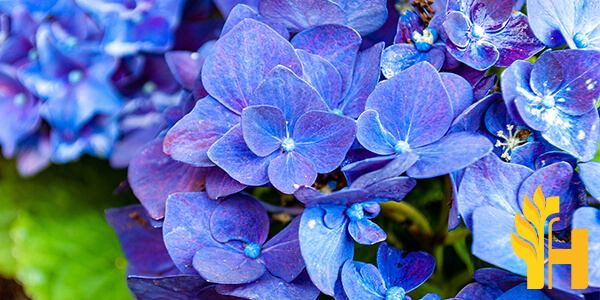Hortensia price

Where to buy and sell Hortensia, lowest (cheapest) and highest price.
check offers buy sell HortensiaToday price for HortensiaHortensia wholesale prices 2022
The Current commodity price of Hortensia per kg, pound in the world in the global markets
hortensia hydrangea pollen
Price range: 202 - 234 CNY / 1 kg | Market: Taipei Market | Date: 2024-05-06
hortensia nadeshiko purple and white
Price range: 112 - 145 CNY / 1 kg | Market: Taipei Market | Date: 2024-05-06
hortensia hydrangea pollen
Price range: 35 - 40 CNY / 1 kg | Market: Taipei Market | Date: 2024-04-29
hortensia nadeshiko purple and white
Price range: 33 - 125 CNY / 1 kg | Market: Taipei Market | Date: 2024-04-29
hortensia hydrangea pollen
Price range: 64 - 82 CNY / 1 kg | Market: Taipei Market | Date: 2024-04-22
hortensia hydrangea pollen
Price range: 64 - 121 CNY / 1 kg | Market: Taipei Market | Date: 2024-04-15
hortensia hydrangea pollen
Price range: 53 - 116 CNY / 1 kg | Market: Taipei Market | Date: 2024-04-08
hortensia nadeshiko purple and white
Price range: 60 - 100 CNY / 1 kg | Market: Taipei Market | Date: 2024-04-08
hortensia hydrangea pollen
Price range: 79 - 117 CNY / 1 kg | Market: Taipei Market | Date: 2024-03-25
hortensia nadeshiko purple and white
Price range: 101 - 101 CNY / 1 kg | Market: Taipei Market | Date: 2024-03-25
hortensia hydrangea pollen
Price range: 80 - 98 CNY / 1 kg | Market: Taipei Market | Date: 2024-03-21
hortensia nadeshiko purple and white
Price range: 53 - 73 CNY / 1 kg | Market: Taipei Market | Date: 2024-03-21
hortensia hydrangea pollen
Price range: 86 - 90 CNY / 1 kg | Market: Taipei Market | Date: 2024-03-18
hortensia nadeshiko purple and white
Price range: 72 - 106 CNY / 1 kg | Market: Taipei Market | Date: 2024-03-18
hortensia hydrangea pollen
Price range: 81 - 91 CNY / 1 kg | Market: Taipei Market | Date: 2024-03-14
hortensia hydrangea pollen
Price range: 80 - 85 CNY / 1 kg | Market: Taipei Market | Date: 2024-03-11
hortensia hydrangea pollen
Price range: 70 - 85 CNY / 1 kg | Market: Taipei Market | Date: 2024-03-07
hortensia hydrangea pollen
Price range: 79 - 84 CNY / 1 kg | Market: Taipei Market | Date: 2024-03-04
Hortensia
Hydrangea, commonly known as hortensia, is a type of erected woody shrub that belongs to the Hydrangeaceae family. Some species occur in a climbing variety. It is believed to be native to the Western Hemisphere and eastern Asia. Currently, no more than 23 species are known. It is especially popular for the flowers the shrub produces. It is cultivated in gardens and greenhouses for the decorative purpose of the large, ball-like clusters of flowers.Hydrangea, also referred to as hills-of-snow, reaches up to one meter in height and produces enormous round clusters of white or multicolored flowers. The French variation, H. Macrophylla, is widely cultivated all around the world in many varieties as it creates large clusters of flowers available in a vast selection of colors. The flowers occur in blue, lavender, purple, pink, and rarely white. The color of petals is highly influenced by the acidity of the growing medium: rose and pink color is the effect of low and neutral acidity of the soil, while lavender and blue color is the effect of stronger acidity. Blue flowers can be artificially produced by adding chemicals to increase the acidity of the soil before the plant begins to produce flowers.
Apart from its gardening and greenhouses varieties, hydrangea is also used as an ornamental plant for gardens and landscapes. The H. Paniculata variety, also known as Grandiflora, is a shrub that reaches up to 9 meters in height. It is a common cultivar used as an ornamental outside plant. It is characterized by its white, pinkish flowers which fade into rusty brown shades.
Hydrangea is mainly used as an ornamental plant, rarely sold as a cut flower. The plant also is used to produce medicines and cosmetics. Its roots and underground stems are often used for making various types of medicine. It is commonly used to treat bladder infections, prostate infections, kidney stones, enlarged prostate, and other diseases of the urinal tract. The plant may be toxic when consumed in large amounts so it should be dosed with care.
The flowers are cultivated all over the world but the intensive production of Hydrangea takes place in the United States, the Netherlands as well as New Zealand. It is also quite popular in Asia, especially in China and Japan.
Global hortensia production
According to the Food and Agriculture Organization of the United Nations (FAO), global production of hortensia was estimated at 1.4 million tonnes in 2013. The top five producers of hortensia were China, Italy, Spain, the Netherlands, and Germany. China is by far the largest producer of hortensia, accounting for almost half of the world's total production. In 2013, China produced 664,000 tonnes of hortensia. Italy is the second largest producer, with an estimated production of 164,000 tonnes in 2013. Spain is the third largest producer, with an estimated production of 135,000 tonnes. The Netherlands and Germany are the fourth and fifth largest producers of hortensia, respectively. In 2013, the Netherlands produced an estimated 120,000 tonnes of hortensia, while Germany produced an estimated 109,000 tonnes. Other notable producers of hortensia include the United States, France, Japan, and Australia. Together, these countries account for a significant share of global hortensia production.Download our new
Husfarm App
Stay up to date with the current prieces of agricultural products all over the world.
Do you want to sell agricultural products?
Are you an Agricultural processor looking for high-quality products to buy?
Post an ad for FREE!
